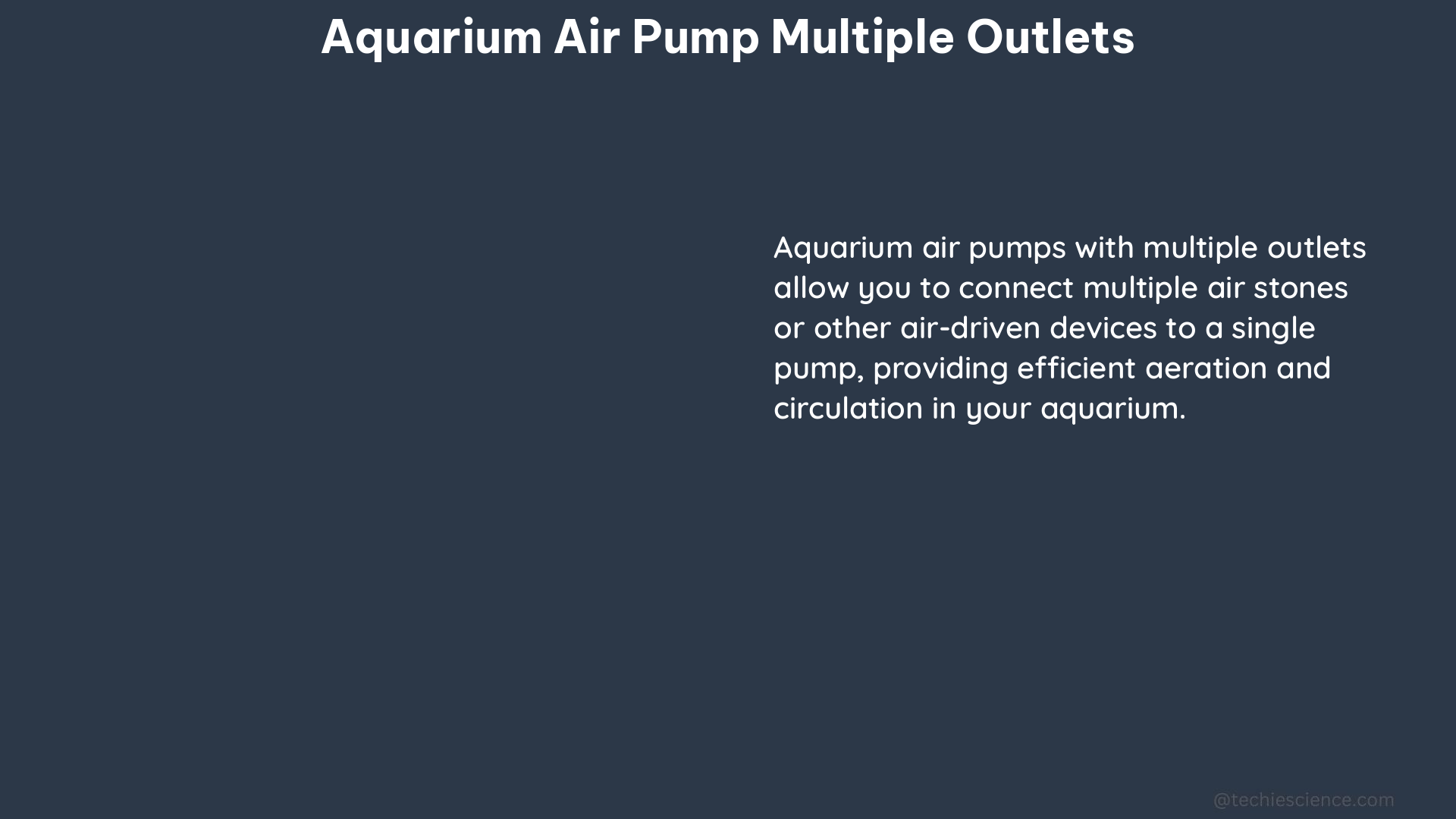When it comes to aquarium air pumps with multiple outlets, understanding the technical specifications, flow rate distribution, pressure drop, and noise considerations is crucial for creating an efficient and customized aquarium setup. This comprehensive guide will delve into the details to help you make informed decisions and ensure optimal air flow for your fish and aquatic plants.
Understanding Air Pump Flow Rates and Outlet Distribution
Aquarium air pumps typically have a flow rate measured in liters per minute (LPM) or gallons per hour (GPH). This measurement indicates the volume of air the pump can move through the system. For example, a pump with a flow rate of 100 LPM can move 100 liters of air per minute through the aquarium.
When using an air pump with multiple outlets, it’s essential to consider the total flow rate of the pump and how it will be distributed among the outlets. For instance, if you have a pump with a flow rate of 100 LPM and two outlets, you could distribute the air flow evenly, resulting in 50 LPM of air flow for each outlet. Alternatively, you could choose to direct more air flow to one outlet than the other, depending on the specific needs of your aquarium setup.
| Number of Outlets | Flow Rate per Outlet (100 LPM Pump) |
|---|---|
| 1 Outlet | 100 LPM |
| 2 Outlets | 50 LPM per outlet |
| 3 Outlets | 33.33 LPM per outlet |
| 4 Outlets | 25 LPM per outlet |
Pressure Drop Considerations

Another important factor to consider when using an air pump with multiple outlets is the pressure drop that occurs as the air flows through the system. This pressure drop can be influenced by several factors, including:
- Airline Length and Diameter: Longer and narrower airlines will result in a higher pressure drop, reducing the air flow at the outlet.
- Number of Valves and Accessories: Each valve, check valve, or other accessory added to the system can contribute to the pressure drop.
- Height Difference: The height difference between the pump and the highest point in the system can also affect the pressure drop.
It’s crucial to ensure that the air pump is capable of generating enough pressure to overcome these factors and maintain the desired flow rate at each outlet.
Noise Considerations
When using an air pump with multiple outlets, the noise level of the pump is an important consideration. Some air pumps can be quite loud, especially when only one outlet is in use. However, using both outlets can help to distribute the noise and reduce the overall volume.
To mitigate noise issues, you can consider the following strategies:
- Placement: Positioning the air pump in a location away from the main viewing area of the aquarium can help reduce the perceived noise level.
- Acoustic Dampening: Using a sound-dampening enclosure or placing the pump on a soft surface can help absorb and reduce the noise.
- Outlet Distribution: Distributing the air flow across multiple outlets can help disperse the noise throughout the aquarium.
DIY Solutions for Managing Multiple Outlets
For aquarists looking to customize their air flow distribution, there are several DIY solutions available:
- Tri-Valve or Gang Valve: These valves allow you to individually adjust the air flow for each outlet, giving you greater control over the system.
- Airline Splitters: Airline splitters can be used to divide the air flow from a single outlet into multiple lines, enabling more precise control.
- Airline Clamps: Adjustable airline clamps can be used to restrict the air flow to specific outlets, allowing you to fine-tune the distribution.
By understanding the technical specifications, pressure drop, noise considerations, and DIY solutions, you can create a customized and efficient aquarium setup that meets the specific needs of your fish and aquatic plants.
Reference:
1. Number of Outlets on Air Pump
2. Question: 2 Output Air Pump
3. Double Outlet Aquarium Air Pump
